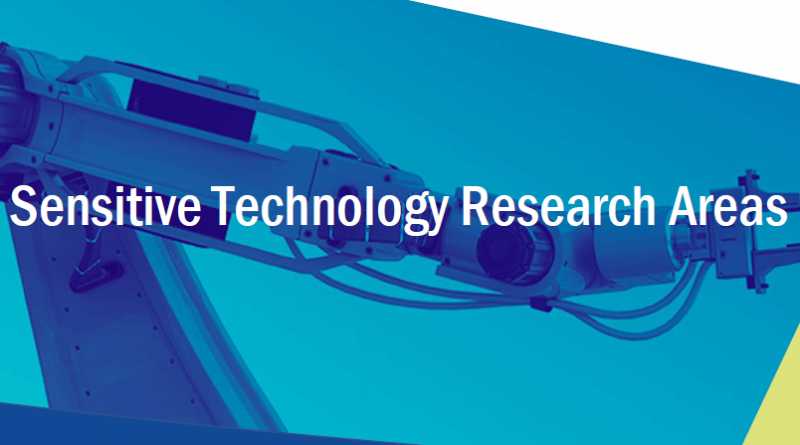Canada’s Sensitive Technology Research Areas
Statement from Minister Champagne, Minister Duclos and Minister Mendicino on protecting Canada’s research
From: Innovation, Science and Economic Development Canada
February 14, 2023 – Ottawa, OntarioThe Honourable François-Philippe Champagne, Minister of Innovation, Science and Industry, the Honourable Jean-Yves Duclos, Minister of Health, and the Honourable Marco E. L. Mendicino, Minister of Public Safety, made the following statement:
“Our government takes its responsibility to protect Canadian research very seriously. Canada’s advanced research ecosystem is at the forefront of global discovery, but it can also be an attractive target for foreign state actors that pose a risk to our national security. We have made great strides in protecting Canada’s research ecosystem, but with a constantly evolving threat environment, further action is needed.
“That’s why, today, as another key step in securing Canadian research, Minister Champagne and Minister Duclos are requesting that the Canada Foundation for Innovation and Canada’s federal research granting councils—the Social Sciences and Humanities Research Council of Canada, the Natural Sciences and Engineering Research Council of Canada, as well as the Canadian Institutes of Health Research—adopt a further enhanced posture regarding national security.
“Grant applications that involve conducting research in a sensitive research area will not be funded if any of the researchers working on the project are affiliated with a university, research institute or laboratory connected to military, national defence or state security entities of foreign state actors that pose a risk to our national security. This enhanced policy will be implemented rapidly and in close consultation with our departments, Canada’s national security agencies and the research community.
“This new action is one of many significant steps the Government of Canada is taking to protect our country, our institutions and our intellectual property. This includes guidelines developed in consultation with the Government of Canada–Universities Working Group to support due diligence on potential risks to research security, and the establishment of a Research Security Centre to provide advice and guidance directly to research institutions.
“Ministers have also written to Universities Canada and the U15 Group of Canadian Research Universities urging them to follow similar guidelines for all their research partnerships, and more particularly those partnerships involving sensitive research areas. We will work closely with our university‑sector colleagues to ensure these additional steps are implemented effectively.
“Protecting Canadian research is our top priority.”
PDF version

Table of Contents
- Introduction
- 1. Advanced Digital Infrastructure Technology
- 2. Advanced Energy Technology
- 3. Advanced Materials and Manufacturing
- Advanced Materials
- Advanced Manufacturing
- 4. Advanced Sensing and Surveillance
- 5. Advanced Weapons
- 6. Aerospace, Space and Satellite Technology
- 7. Artificial Intelligence and Big Data Technology
- 8. Human-Machine Integration
- 9. Life Science Technology
- Biotechnology
- Medical and Healthcare Technology
- 10. Quantum Science and Technology
- 11. Robotics and Autonomous Systems
Introduction
The list of Sensitive Technology Research Areas consists of advanced and emerging technologies that are important to Canadian research and development, but may also be of interest to foreign state, state-sponsored, and non-state actors, seeking to misappropriate Canada’s technological advantages to our detriment.
While advancement in each of these areas is crucial for Canadian innovation, it is equally important to ensure that open and collaborative research funded by the Government of Canada does not cause injury to Canada’s national security or defence.
The list covers research areas and includes technologies at various stages of development. Of specific concern is the advancement of a technology during the course of the research. This list is not intended to cover the use of any technology that may already be ubiquitous in the course of a research project. Each high-level technology category is complemented by sub-categories which provide researchers with further specificity regarding where the main concerns lie.
The list will be reviewed on a regular basis and updated as technology areas evolve and mature, and as new information and insights are provided by scientific and technical experts across the Government of Canada, allied countries, and the academic research community.
1. Advanced Digital Infrastructure Technology
Advanced digital infrastructure technology refers to the devices, systems and technologies which compute, process, store, transmit and secure a growing amount of information and data that support an increasingly digital and data-driven world.
Advanced communications technology
Technologies that enable fast, secure and reliable wireless communication to facilitate growing demand for connectivity and faster processing and transmission of data and information. These technologies could also enable communications in remote environments or adverse conditions where conventional methods are ineffective, or in spectrum-congested areas. Examples include: adaptive/cognitive/intelligent radios; massive multiple input/multiple output; millimeter-wave spectrum, open/virtualized radio access networks, optical/photonic communications and wideband high frequency communications.
Advanced computing technology
Computing systems with high computational power that enable the processing of complex calculations that are data- or compute-intensive. Examples include: context-aware computing, edge computing, high performance computing and neuromorphic computing.
Cryptography
Methods and technologies that enable secure communications by transforming, transmitting or storing data in a secure format that can only be deciphered by the intended recipient. Examples of emerging capabilities in cryptography that may replace or enhance current encryption methods include: biometric encryption, DNA-based encryption, post-quantum cryptography, homomorphic encryption and optical stealth encryption.
Cyber security technology
Technologies that protect the integrity, confidentiality and availability of internet-connected systems, including their hardware, software, as well as data from unauthorized access or malicious activities. Examples include: cyber defence tools, cross domain solutions and moving target defence technology.
Data storage technology
The methods, tools, platforms, and infrastructure for storing data or information securely in a digital format. Examples include: five-dimensional (5D) optical storage, DNA storage, single-molecule magnets.
Distributed ledger technology
Digital ledgers or databases that track assets or records transactions in multiple locations at the same time, with no centralized or single point of control or storage. Examples include: blockchain, cryptocurrencies, digital currencies and non-fungible tokens.
Microelectronics
Microelectronics encompasses the development and manufacturing of very small electronic designs on a substrate. It incorporates semiconductors as well as more conventional components such as surface mount technology with the goal of producing smaller and faster products. As microelectronics reach the limit for integration, photonic components are making their way into this field. Examples of semiconductor components include: memory-centric logic, multi-chip module, systems-on-chip and stacked memory on chip.
Next-generation network technology
Fifth and future generations of communications networks that use high frequency spectrums to enable significantly faster processing and transmission speeds for larger amounts of data. Advancements in networking could allow for integrated communication across air, land, space and sea using terrestrial and non-terrestrial networks, as well as increased data speed and capacity for network traffic. It could also pave the way for new AI- and big data-driven applications and services, and its massive data processing capabilities could enable the Internet of Everything.





